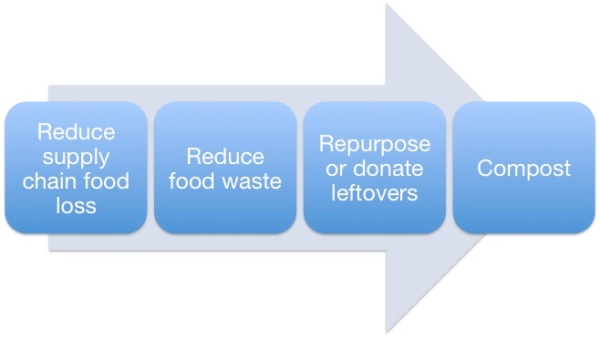Food Waste Solutions for Events
A couple of years ago, I read about how the Vancouver Food Bank received 40,000 lbs of bananas that had been passed on by a retailer due to their colouring. I was shocked, but it sparked an interest in food waste that has become a big focus on the work I do with sustainable events.
Last week, I was invited to be a part of a panel hosted by Partners in Project Green, Tourism Toronto, and The International Centre on sustainable food issues. For my contribution, I focused on food waste solutions for events.

Paradigm Shift
In order to really address food waste issues in events, we need a paradigm shift on how we view food. Too often, success is measured by abundance and symmetry, and not about artistry, creativity, sustainability and quality. This tomato (can you see the face?) is a great example of the types of fruits and vegetables that are thrown out because of an emphasis on perfect produce.
Food Loss and Food Waste in Canada
In December, 2014 consulting firm Value Chain Management released a report that found that Canadians waste $31 billion dollars worth of food per year, with 9% coming from hotels and restaurants. Fortunately, there are many ways that we can bring this number down.
What’s the difference between food loss and food waste?
- Food loss: occurs during growing, slaughter, processing or distribution
- Food waste: discarded by the consumer
Choosing Your Supplier
For event planners, the decision that will have the greatest impact on your food waste strategy is your choice of supplier. When selecting a venue, caterer, or other food service provider, ask about how they deal with food waste, and for specific examples of how they work with their supply chain to reduce food loss and food waste.
How Meeting Planners Can Help Reduce Food Waste
- Be flexible: give your supplier the flexibility to make food choices for you based on your sustainability goals and budget
- Focus on quality not quantity: Select smaller portions of better quality items
- Review your guarantees: Cross check your meal guarantees with arrival and departure patterns, and ask participants to advise you of their meal preferences and attendance at food functions
- Offer fewer options and more sizes: This reduces variability and gives attendees the option to select the size they would prefer
- Communicate: Let your attendees know that you’ve introduced a food waste strategy and enlist their support
How Caterers, Hotels and Venues Can Help Reduce Food Waste
- Supply chain food loss: Talk to your suppliers, farmers and vendors about opportunities to reduce food loss in their operations such as taking their misshapen produce, or lesser known cuts of meats.
- Serve blemished food: A couple of years ago, the U.N. served a banquet of food that would have been rejected by European supermarkets to high ranking dignitaries to highlight food waste. Sourcing blemished food can reduce your costs and help prevent food waste. P.S. If all your chocolate covered strawberries are not all the same size, who cares? They’re strawberries and they’re covered in chocolate, they’re delicious in any size.
- Sustainable weekday plan: A great way to reduce food waste is to have multiple clients using the same menu. By offering a weekday plan with a special for each day, suppliers can encourage more clients to sign on to the same menu.
- Leftover/surplus recipes: Have a plan in mind for what to do with leftovers and scraps. For example, bread pudding can be made with leftover pastries.
- Smaller plates: In 2012, Nordic Choice hotels (in conjuction with GreeNudge and CICERO) conducted a study where they found that food waste was reduced by 19.5% by using smaller plate sizes. Importantly, guest satisfaction did not chance.
- Pre-set 80% of tables: If you are pre-setting salads and/or desserts, only set 80% of the tables in advance. Additional tables can be filled as needed.
Food Waste Priorities

In developing a comprehensive food waste strategy for events, there are four steps that should be followed.
- Reduce supply chain food loss: Work with your supply chain to identify opportunities to reduce food loss
- Reduce food waste: I suggest beginning with a focus on meat and dairy, as these are typically the most resource intensive to produce
- Repurpose or donate leftovers: This can include donating to charities, serving uneaten banquet foods in employee cafeterias, and even donating it as animal feed to farms
- Compost: This is the last step in the food waste strategy, but should always come after the waste minimization strategies mentioned above
Food Donation Legislation
When it comes to food donations, many suppliers may be concerned about liability. Fortunately, many jurisdictions have legislation to protect food donors. It can be helpful to provide suppliers with copy of applicable legislation, such as the Ontario Food Donation Act, 1994.
